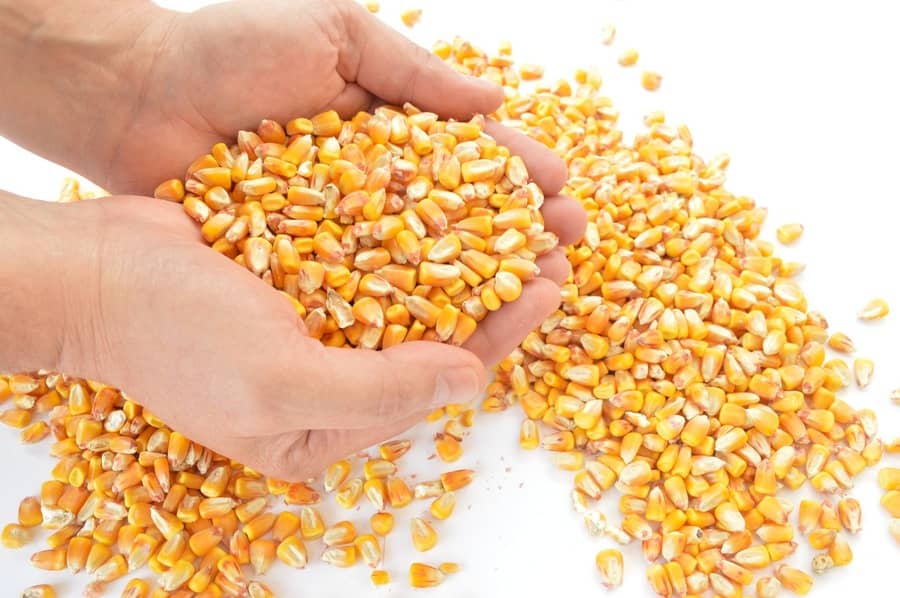Porto Alegre, December 6, 2022 – While the external picture shows pressure on the Black Sea side and tensions on the Argentine side, the internal corn market offers an attempt to control prices in early December, in line with the external picture and the exchange rate. Brazilian exports confirmed the record in November shipments and already exceed 41 mln accumulated tons, and we still have January shipments. Cut in stocks, rising freight rates due to the soybean logistics, lack of importation options? These are factors that may influence internal prices from January onward.
The Brazilian domestic market was greatly influenced last week by the combination of two market indicators. Initially, the exchange rate moving back to less than BRL 5.20/dollar was reflected in the excellent figures for the Brazilian economy, such as a record primary surplus for October and a decline in unemployment. Before the political transition, the country is ready to grow at satisfactory rates. This encourages the financial market, which ignores part of the economic recipe that is designed for 2023. However, the more valued exchange rate puts pressure on corn prices at the port and ends up influencing part of the domestic market.
Moreover, the CBOT lows last week collaborated to bring prices down in Brazil ports from BRL 91/94 for December/January to 86/88 a bag. The strong decline in port references means there is less support for prices in the interior and the alternative of selling is turned to buyers in the internal market only. Domestic market buyers are still betting on sales pressures from growers this month of December, whether due to cash or space needs. Even if there are some isolated problems with soybeans in Goiás, Mato Grosso, and Mato Grosso do Sul, we cannot say that this climatic effect will be enough to sharply lower the size of the soybean crop and reduce the logistical problems that start to happen from January. Therefore, it is still necessary to sell corn at the end of the year to free up space.
If, on the one hand, exporters lose strength for new business at higher prices, at this moment, shipment commitments are still very high. November closed with the Secex data of 6.05 mln tons, a record for the month, while effective shipments stood at 5.4 mln tons in the month. Part of the ships scheduled for November was postponed to December due to protests on the roads and stoppage of the flow of trucks to some destinations. Now, December is scheduled with 5.9 mln tons, also a record for the period.
In the accumulated result for the year, we have 41.5 mln tons with the December schedule. However, we still have January, which is part of this business year. If January surprises in terms of volume of shipments, we could have 44/45 mln shipped from February to January, a new record for Brazil. Of course, we will still have demand adjustments until the end of the business year, but any additional shipment volume beyond 42 mln tons will affect the carryover stocks for 2023, currently projected at 5.6 mln tons.
This means that the market will need to carefully monitor exports from Rio Grande in February and March, in the new business year, as these are volumes that need to meet regional domestic demand. The crop of 25 mln tons in the Center-South in the first semester is also enough to meet the demand in the South of Brazil between February and June. However, São Paulo and Minas Gerais have the entrance of later crops and may have price highs until April, at least, to meet their local demand. The high may be due to regional difficulties in the harvest and supply, and the high cost of logistics for corn flow over long distances.
Growers who would need to release silos and storage sites for soybeans are already doing so, and this will not be a bearish factor for corn in the first half of the year. Now, of course, the vision of a 2023 second crop being planted earlier, starting in January in several locations, offers some comfort with the entry of corn in June/July to meet the Brazilian domestic demand. Owing to this potential planting in a more suitable window, the price movement in the first half may not continue from May onward, of course, depending on the US crop as well.
The Brazilian summer crop is proving to be satisfactory. In general, rains have been regular in much of the South and Southeast of the country, where most of the summer corn crop is concentrated. In Rio Grande do Sul and Santa Catarina, corn is starting to get into a silking stage, and the rains are necessary. For these last few days, the rains have reached a good part of Rio Grande do Sul, but are still leaving the west side of the state in need of continued rains for the corn and soybeans that are being planted. We have not yet evaluated problems for the other regions of the South in the case of corn.
In the Southeast, there was a drought in western São Paulo and northern Mato Grosso do Sul that seems to have been consistently eased in recent days. Minas Gerais under normal conditions despite the attention needed for some locations in Triangulo Mineiro.
For the summer corn crop, the concern has been Goiás, since the rains have occurred, but with poor coverage. Local corn comes later, so there is still time for us to assess the local crop. In November, the rainfall profile confirmed the traditional characteristic of La Nina, that is, below-normal rainfall in Rio Grande do Sul and Argentina.
Follow the Safras Agency on our website. Also follow us on our Instagram and Twitter and stay on top of the main agribusiness news!
Copyright 2022 – Grupo CMA

